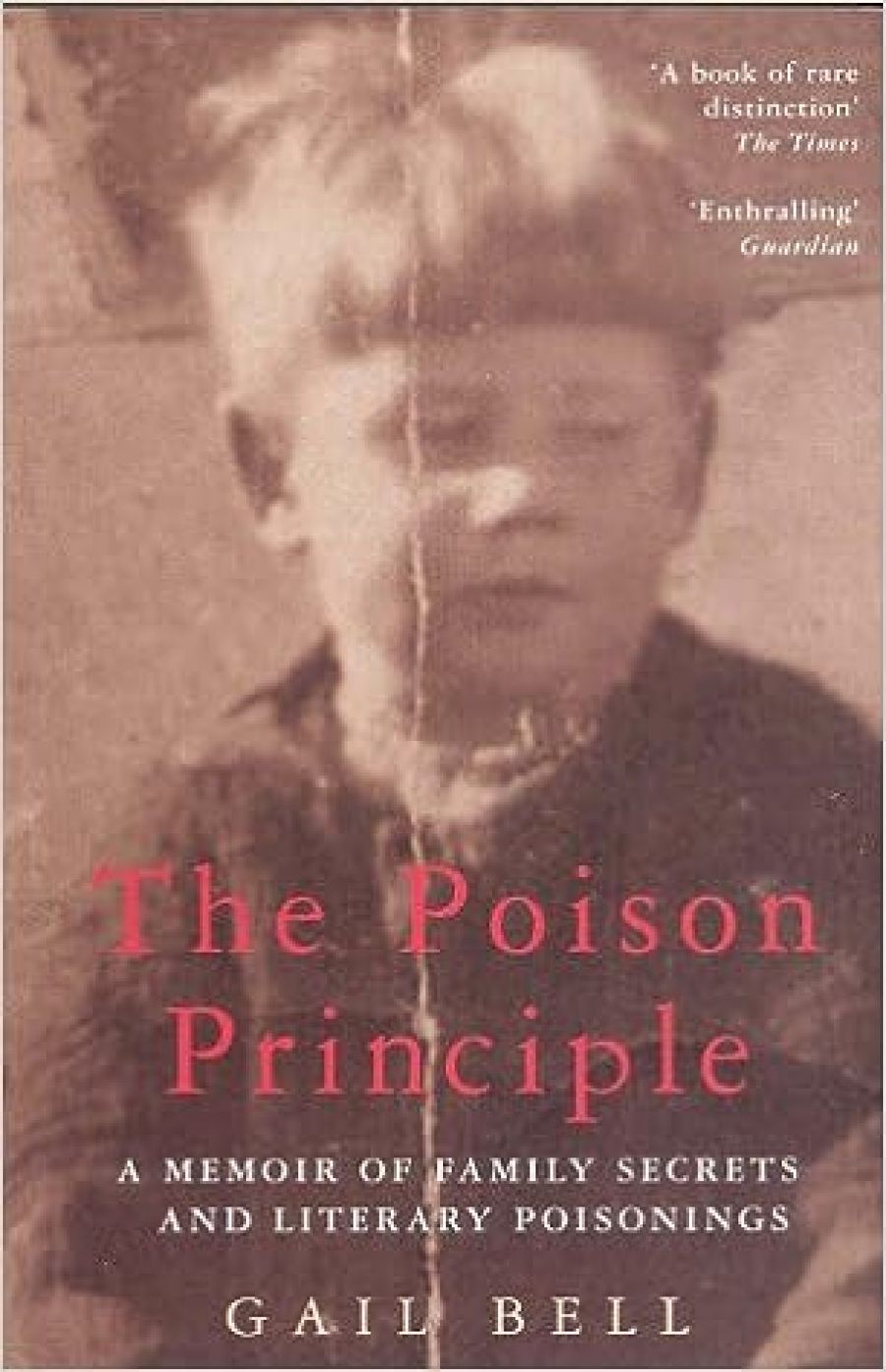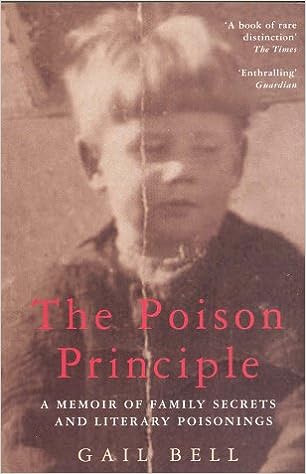
- Free Article: No
- Contents Category: Non-fiction
- Review Article: Yes
- Article Title: Lethal People
- Online Only: No
- Custom Highlight Text:
In the sixteenth century a Swiss physician and alchemist by the name of Paracelsus claimed that everything was potentially poisonous, as long as you took enough of it: ‘the right dose differentiates a poison and a remedy.’ There is plenty of evidence to support this point of view. Legal claims for damages caused by asbestos and passive smoking are reminders that what may be a safe environment for some can be toxic for others. Indeed, one of the most common forms of contemporary poisoning is known as an ‘overdose’. The substance was fine. The amount was wrong.
- Book 1 Title: The Poison Principle
- Book 1 Biblio: Picador, $21 pb, 276 pp
- Book 1 Cover Small (400 x 600):

Bell is a trained pharmacist. She brings a trained eye to her descriptions of workings of cyanide, arsenic, opium, mercury, belladonna, henbane, nightshade, aconite and a list of other nasties. Bell knows how these things all work in a pharmacological or physiological sense, like much popular science writing, this is fascinating stuff. We learn, for example, that arsenic has a sharp taste, a claim that few will care to test, especially given that arsenic moves through the system with cruel languor. We discover that strychnine, suitably diluted, has been used as an aphrodisiac, a stimulant of the appetite, and a means for improving the texture of a dog’s hair. There are plenty of bizarre and wondrous questions for an evening of Trivial Pursuit waiting to be culled from the pages of this book. There is information about the difficulties of poisoning an elephant.
The Poison Principle, however, provides a rich context in which to discover new facts. Its knowledge is not deployed randomly. Quite the opposite. Bell is looking for clues.
In 1927, Bell’s grandfather poisoned two of his four sons. Her father was not one of them. The killer’s name was William Macbeth. He was never charged or convicted, since, being a doctor, he was such a respectable member of the Blue Mountains community in which he worked that nobody outside his family seems to have thought he was capable of criminal activity. One coronial inquest, into the death of the toddler Patrick Macbeth, found that strychnine was accidentally self-administered.
There are an enormous number of unanswered questions in this family, and Bell negotiates an obstacle course of secrets, fear, protectiveness and lack of interest with both candour and delicacy. In 1980, she had a single conversation with her great-aunt Rose who happened to be on the scene when the poisonings took place over half a century before. Her memory had not faded. The problem is rather that it may have compounded. Rose was the half-sister of Macbeth’s young wife, Ellen. Rose’s own story is one of misfortune: her father had disappeared early in her life and she had to struggle to find a place in the affections of her mother’s new partner against that partner’s own daughter, Ellen. When the charismatic travelling healer and miracle worker, William Macbeth, showed more interest in Ellen than Rose, the older girl’s sense of injury was intensified. ‘Rose fancied William,’ divulges another sister, ten years after Rose’s death. Bell has to confront the question of how far Rose is to be believed and how far her story is itself poisoned.
Bell deals both with the manner in which various forms of poison have developed a kind of mystique and the manner in which her grandfather spun stories around himself. She looks at Keats’s romantic attraction to ‘easeful death’ and suggests that the kind of painless poison he dreamt of didn’t exist and still doesn’t. More realistic is the death of Flaubert’s Emma Bovary who takes ten pages to die in an unglamorous fashion. Cleopatra devoted herself to staging a perfect exit from this world with the aid of poison. She was blinded by vanity. Real poison would appear to be more readily detected in the chaotic demise of Napoleon I. But poison and stealth go hand in hand. The world of toxins is a world of secrets.
Bell plays detective within her own family. She believes that William Macbeth has assumed an identity and taken a name that will help his patent medicines to sell. Going through the notes of her interview with Rose, she notices that her great-aunt uses an unusual word to describe the tonics made by Macbeth. The word is ‘duplex’, most often used to describe a type of housing, but in the dispensary it means a solution of double strength. It suggests that Macbeth, whoever he really was, had some training in pharmacy. Bell looks through records of pharmacy training, advertises in newspapers, waits and eventually hears from someone who can help her find the real identity of this man. Dr William Macbeth, allegedly from Pennsylvania, USA, was really just an unqualified shyster from Coogee. And twisted enough to poison his own flesh and blood.
‘My desire to see the man in the monster, William Macbeth, was the beginning of a long journey ...’ The Poison Principle involves a great many herbs, venoms, extracts and potions. But it deals ultimately with a mystery that is beyond any formula. The British law that we inherited apparently makes it impossible to try a poisoning as manslaughter. It may be cold comfort if you find yourself in the wrong place at the wrong time, but apparently you can’t be poisoned accidentally in the way you can be shot accidentally. William Macbeth, whoever he may have been, was making decisions and acting on them in a skilled way. Three-quarters of a century later, his granddaughter is still looking for some kind of remedy for the chaos he created. In the process she has distilled a wise and knowing book.


Comments powered by CComment